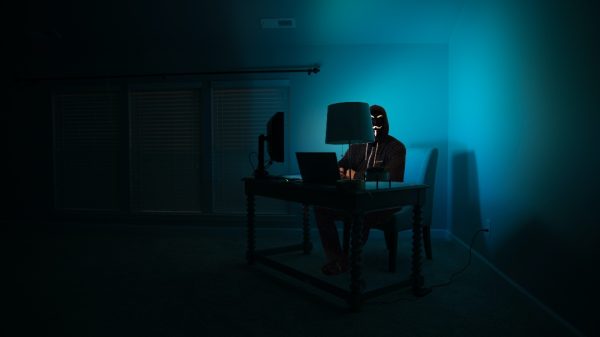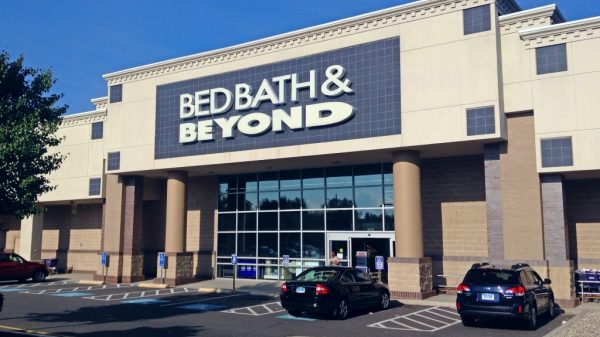One of the more remarkable methods used (even by “Intelligence Agencies”) to establish if something is true or not is to is to label it true if it came from a “reliable source”. Who said it? If he or she is considered reliable or an authority the data is considered true or factual. The other – perhaps even more silly – system in use is multiple report. If a report is is heard from several areas or people it is “true”. Five or ten people hear the same thing and pass it along, it becomes a “fact”.
I have been hearing about the Shadow Inventory for well over a year now. It is HUGE. It is sensational. A Big Giant Tsunami (BGT) of inventory is going to be unleashed by the lenders. Get ready. Like nothing you have ever seen. The housing market will be flooded with inventory like never before. No doubt it will change life as we now know it.
Only it is complete crap. Nothing but invented data dreamed up and endlessly passed along by organizations and individuals who heard it from someone else (I have not yet tracked the original source for this shadow inventory nonsense as it seems to emanate from “everywhere”). What is really interesting are all the “new facts” dreamed up by “industry observers” to make the Big Giant Tsunami theory still possible – in spite of the overwhelming abundance of easily observable data that would directly contradict the idea of the banks having this huge inventory that they are holding back to be released later.
I bet I have your attention now. Some of you may even be angry – you damn well KNOW there is a shadow inventory!!! So lets look over why I am publicly saying it isn’t true and what the thought process was for the people and organizations who have been saying (and continue to assert) it is true. These people would have no reason to intentionally forward false data. So what data did they look at to conclude there was a Big Giant Tsunami of inventory the banks have and aren’t releasing? Charts like this – graphically showing the Shadow Inventory are all over the the media and the internet.
So what system is being used by economists and others to calculate this shadow inventory? Simple, take the cumulative total foreclosures recorded (the big number) and subtract the current active and pending inventory in the MLS, plus the sold MLS properties (the little number) and the remaining number is “the shadow inventory”. Simple, quick and it requires NO LOOKING at anything – just grade school level math.
To be clear, I am NOT referring at all to any foreclosures yet to come. Inventory the banks may wind up getting in the future. I am only talking about NOW. It is no secret that REO agents are losing market share as they, as a group, have less and less inventory being given to them by their asset managers. These same asset mangers who – last year – kept telling them that they had a lot more coming in to give them. It just never arrived for them to give. The only REO agents I know who are doing better these days are those REO agents who deal in higher end homes. Those high end agents are getting inventory, lots of it. This is not to say that all across the country there is no REO inventory, there is – just less and less of it. The BGT crowd has invented the idea that the banks have the inventory but are keeping it until the prices go up!
How about a few facts that I know are true here in the Phoenix area – and I have every reason to believe are true right across the country (as I can think of NO reason for these facts to only be true here).
Fact: In my local MLS, there are about THREE TIMES as many bank owned homes listed in the MLS as the MLS actually shows. I know this because two guys who actually look counted them all. One by one.(Mike Orr of The Cromford Report and Tom Ruff of The Information Market) They counted them and compared the addresses shown in the MLS, one by one, with the County Assessor records. These are homes listed by banks who instructed the listing agent to NOT use the term “bank owned” in the listing.
Tom Ruff and Mike Orr spent months going over every deed transfer in Maricopa County (Looking at each foreclosure going to the bank and tracking that house for its current ownership and they could directly account for all but about 5,000 houses) and established that for the Greater Phoenix Area THERE IS NO SHADOW INVENTORY.
Fact: Major banks often off load huge portfolios of inventory to hedge funds. Huge portfolios. Anyone or any organization who is claiming that they are “tracking” what the banks are doing who does not have sufficient access to track those portfolio sales is simply engaging in the simple grade school math referenced five paragraphs above.
No doubt there will be some readers who remain convinced that what they have read about and then co-created must be true. That’s okay. If you are happy believing that a Big Giant Tsunami is coming – enjoy the wait. However, I’m betting you remain completely dry.
Article originally published January 26, 2010.
CC Licensed image courtesy of zen via Flickr.com.
Russell has been an Associate Broker with John Hall & Associates since 1978 and ranks in the top 1% of all agents in the U.S. Most recently The Wall Street Journal recognized the Top 200 Agents in America, awarding Russell # 25 for number of units sold. Russell has been featured in many books such as, "The Billion Dollar Agent" by Steve Kantor and "The Millionaire Real Estate Agent" by Gary Keller and has often been a featured speaker for national conventions and routinely speaks at various state and local association conventions. Visit him also at nohasslelisting.com and number1homeagent.com.














































Ken Brand
January 26, 2010 at 7:02 am
Rumor, innuendo, spin, etc. Thanks for shinning a flashlight. I think the whole Shadow Inventory story wouldn’t be nearly as compelling without the word Shadow. Shadow sounds so sinister and ominous.
Thanks,
Todd Barnard
January 26, 2010 at 8:19 am
“Anyone or any organization who is claiming that they are “tracking” what the banks are doing who does not have sufficient access to track those portfolio sales…”
Yes, there is a lot of speculation about properties being kept off the market by banks ( or the homeowners themselves ) and Mr. Shaw is correct that no third party has access to internal bank data.
But there are other methods of “detection” – like a high volume of home repairs being scheduled for a property all at the same time.
In the same way that scientist can detect a black hole. A black hole cannot be observed directly, but its gravitational effects on the objects near by can.
If a property suddenly has exterior paint, landscaping, roof and plumbing repair, etc. all being performed simultaneously, is that a good indicator of it being put onto the market?
We think so!
🙂
Lani Rosales
January 26, 2010 at 9:57 am
I can’t believe I’m saying this, but Russ, I disagree.
First, let me say that I agree with the impending doom that has been forecast, and the chart above is ludicrous of course and highly exaggerated.
Of course the “shadow inventory” exists but not in the way some media outlets portray- there’s not a hidden inventory that fat cat bankers are sitting on top of and laughing in a sinister way at how powerful they are because they can flood any market anywhere at any time. No, there is a shadow inventory of homes that have not been fully processed.
I don’t think there’s anything sinister, but many markets don’t have nearly the number of “asset managers” or even processors that they did in 2006. Hell, 140 banks were shut down by FDIC last year alone, and more are on the way. That said, it takes humans to process each foreclosed home and as you know, they can barely answer the phone much less rapidly process a seized home upon reception (there are homes across the country that haven’t paid in more than six months but still live in the home strictly because there is not enough manpower to process the necessary paperwork). It takes time to repair foreclosed homes and it takes time to get them to market.
The unprocessed, not-yet-to-market, we-don’t-have-enough-people-to-process-these-seized-homes-in-24-hours are the shadow inventory I write about, not the we’re-cocky-bankers-holding-on-to-assets-for-the-hell-of-it kind of shadow inventory that is widely exaggerated by the CNNs of the world. Perhaps Phoenix is a different animal, but on this side of the world, there is no way all homes seized are instantly on the market, thus they become “shadow inventory.”
BawldGuy
January 26, 2010 at 10:30 am
Lani — First, allow me to observe how sick and tired I am of this Shaw guy always confusing the issues with facts.
Your take makes sense, but doesn’t really challenge the whole ‘Tsumani’ belief. Yours would be more of a cool, non-threatening wave, suitable for bodysurfing. Also, I’d love to hear someone explain what Russell found in his local MLS — the difference between reported REO’s for sale, and the actual number. If that can indeed be verified as the rule nationwide, it would change a whole buncha economist’s outlook on the next few years.
Benn Rosales
January 26, 2010 at 1:28 pm
When the west coast and phoenix markets crashed years ago they were seen as anomalies, today those anomalies were only a precursor to what was to come, and if the banks understood that and continued to allow the pendulum to continue to swing with controls in place they would have seen a devaluation in assets across the board. When one is playing stocks at nearly zero it doesn’t mean they’re out of the game, it only means you sit and wait for the government to keep you in business (as they did) and for the market to yield upwards and then SELL!
or the dems made it up to get elected. 🙂
Patrick Hake
January 26, 2010 at 11:44 am
The shadow inventory apocalypse, even if true, is overstated because it only accounts for supply and not demand. What about the “Shadow Demand”.
In my area, demand has reached the point where we have about 2.5 months of inventory in some areas, when you remove homes stuck in short contingent status from the equation.
That means we could easily absorb another 1,200 to 1,500 homes on the market and still be at 6 months inventory, which many consider neutral.
If there is a shadow inventory, it is not in post foreclosure bank owned properties, but rather in pre-foreclosure short sales and homes in the modification process that have had their trustee sale rescheduled numerous times.
Only a small percentage of home owners that are requesting short sales and modifications are getting approvals, but many of them are able to drag on the process on for months and some cases years without making a payment. These homes would have already been foreclosed on and to market in 2007 and 2008.
At some point, the homes stuck in the pipline will either need to have substantial modifications, or they will end up inventory as short sales or bank owned properties. That is the real “Shadow Inventory”.
Curtis Van Carter
January 26, 2010 at 12:07 pm
Hi
I agree this is something often quoted and rarely tracked accurately. However, I do read a blog occasionally that contains document a great deal of documentation called Dr. Housing Bubble Blog, doctorhousingbubble.com/.
I admit he sounds very convincing even though I often find it difficult to to get through the overwhelming number of facts and charts he has in every post. I would be curious of your thoughts.
Matthew Hardy
January 26, 2010 at 1:05 pm
Who knows what evil lurks in the hearts of men?
😉
John Wake
January 26, 2010 at 1:41 pm
Using Cromford Report data, yesterday I posted the Phoenix area zip codes that have the most bank-owned homes as a percentage of all existing single family homes in the zip code, scottsdaleforeclosurescentral.com/phoenix-shadow-inventory-of-bank-owned-homes.
Is 2% high? As the banks eventually bring that percentage down, will it put significant downward pressure on home prices? I haven’t figured that out yet.
Kaye Thomas
January 26, 2010 at 1:48 pm
Russell,
Well said! This whole year long scenario about shadow inventory has always mystified me. One would think that at some point some of the “shadow” inventory would have hit the market somewhere in the last year. Seems to me there are rules about banks holding these types of assets on their books without having a large amount of cash in reserve to balance the cost of the asset.
I think the real issue here is what the heck does “shadow” inventory actually mean? Are we talking about REO’s, homes in any stage of the foreclosure process or those that might someday be distressed. Are we including every homeowner who might want to sell at a price they can’t reasonably expect in this market?
We are definitely going to see more high end inventory moving into the distressed category but it will be on the market as soon as the banks can process it. Some of these high end homes will sell off market to folks in the know but it is not likely lenders will be holding these homes on the books as party houses for execs.
Justin Boland
January 26, 2010 at 3:07 pm
This whole conversation was extremely educational — thanks to everyone, Lani and Patrick in particular. Agent Genius is definitely the best site for learning The Details I’ve found so far, thanks for putting in the time to do it right.
Joe Loomer
January 26, 2010 at 3:39 pm
Curtis brings up a good point – I’ve been reading the doctorhousingbubbleblog.com for two years myself, and believe there’s some measure of credibility there about the condition of the California market (yes I’m in Georgia, not Cali, I follow it because Georgia was #1 in mortgage fraud and we’re #3 in foreclosures).
Didn’t LA county just SUSPEND the sherriff’s sale from February until NEXT October? Isn’t that by definition SIX months of inventory NOT being sold on the courthouse steps yet? Is this happening anywhere else? I know of Georgia homeowners who have been given fifth, sixth, and seventh chances to remain in their homes… Does this help? I assume so – keep the inventory off the books THAT way, and pass the loss on to the consumer who’s actually paying their debt, or AIG or whoever wrote the PMI. Do you really think the banks are eating these costs?
Realtytrac’s listings of pre-foreclosure and unlisted foreclosed properties greatly exceeds the number of actual REOs on our market, yet the number isnt’ swelling.
ShortWoman
January 26, 2010 at 7:05 pm
Thank you thank you thank you for this article! I have been fighting the idea that there are thousands of empty, bank-owned homes ready to flood the market any minute now for roughly 2 years.
It seems to me that all the shadow inventory stats I have seen are nothing more than “total foreclosures minus foreclosures in the MLS == ZOMG DOOM!!” Nobody bothers to note that “total foreclosures” can mean anything from NOD to REO, and nobody seems to remember that there are plenty of ways to sell a property outside the MLS. For that matter, lots of people forget that many states have a period of redemption which explains anecdotes about properties that have been sitting empty. Over the weekend I saw a fear-mongering piece about how Bank of America was going to put 6000 homes on our local market; first problem I saw is that they had completely inaccurate figures on our available units. Why should I trust the prediction if they can’t even get *now* right?
I can’t speak for other regions, but here in Vegas — where we spar with Columbus for the title of Foreclosure Capital of the Nation — I have seen banks change the locks before they even have legal ownership and put it in the MLS the day after they do. Now then, what I have seen banks do is price REOs in a predatory fashion to get as many offers as possible, driving down values for entire neighborhoods. What I have also seen banks do is put off foreclosing, particularly on properties that will be difficult to sell. It’s like they are begging us to get a short sale rolling… then they take months to approve it.
Dan Connolly
January 26, 2010 at 9:37 pm
I have seen several examples personally where the bank has not foreclosed on people who are 12-18 months behind on their payment. These are properties where the owners are way underwater.
As far as why there might really be a shadow inventory, I have suspected that the reason for the banks hiding their losses is not just to protect the market but actually to protect the bank from going under if the fed realized that their liabilities were so much greater than their assets.
Melissa Zavala
January 26, 2010 at 10:44 pm
Russell: A few months ago I had a little “chat” with someone in the upper echelon of Carrington Mortgage who tried to lead me to believe that their investor note holders didn’t care whether they took something back in foreclosure because they could hold onto it for five years before selling it. (Yeah, sure. Banks are really going to hold onto all of the properties in their portfolio for five years. Who cares whether they have any liquid assets in the interim?) We eventually closed the short sale after this little “chat.”
That being said, I know that there are many properties out there that will go to foreclosure because they are not viable loan modifications or short sales. But, I do not think that there is a large shadow inventory in San Diego County. And, I’m certainly not gonna put too many of my eggs in that basket. Kudos to you for keeping it real!
Whether you believe that there is a shadow inventory or not, wasting time waiting around for something that may not come is NOT a good way for any real estate agent to run his or her real estate business.
Joshua Keen
January 26, 2010 at 11:18 pm
On housing inventories take a closer look at:
calculatedriskblog.com/2010/01/existing-home-inventory-long-way-from.html
There are several categories of shadow inventory:
# REOs. There are bank owned properties that have not been put on the market yet. Several sources have told me the number is growing – no one knows why except possibly for accounting reasons (the banks might have to take an addition write down when they sell the property).
# Foreclosures in process. The delinquency rate has continued to rise, and this will probably lead to many more foreclosures this year. The number of foreclosures depends somewhat on the success of the modification programs. Last year many delinquent homeowners listed their homes as “short sales” – so those homes were not shadow inventory, however fewer delinquent homeowners are listing their homes now as they try to work with their lenders on a modification. Some percentage of these homes are shadow inventory.
# New high rise condos. These properties are not included in the new home inventory report from the Census Bureau, and do not show up anywhere unless they are listed.
# Homeowners waiting for a better market. This is the mostly overlooked segment of the market that doesn’t know their home isn’t worth what they think it. What happens when folks that bought in 2004 go to sell in 2013 and the owe 20% more than what they paid?
Inventory is usually the best metric to follow for the housing market – and according to recent releases inventory is declining for both new and existing homes – however shadow inventory (as defined above) does cloud this picture.
Phil Wax - Portland Real Estate
January 27, 2010 at 12:19 am
I strongly suspect that many banks are delaying the foreclosure process whenever possible in order to avoid having to increase both their loss reserves and their capital reserves to offset the potential losses. That happened a lot in the eighties during the S&L crisis. I know. I worked then for the Big 8 accounting firm that had 60% of the S&L business in California. The lenders and their auditors (us) looked the other way whenever possible. I don’t know whether they believed an economic rebound would resolve the problem, or whether they were just deferring the day of reckoning. Maybe a rebounding economy will fix the problem this time. Or maybe not.
Mike
January 27, 2010 at 9:36 am
I just listed a property that, according to the original property preservation company, was vacant in April of 09. Who knows when it was actually vacant. I have another that has been UC for 6 weeks. We can’t close due to unresolved plumbing issues. It turns out that, the property was vacated by the owners after the SS expired, in AUGUST of 2008. We couldn’t understand why most of the plumbing system failed, when it was winterized and had the heat on prior to winter of 2009. It turns out that it was vacated prior to the winter of 2008! Tell me these two do not fit under the shadow inventory category. The bank sat on these vacant properties, that were subsequently damaged. The more I see this, the more I think that there may be, an unfortunate shadow inventory.
Paula Henry
January 28, 2010 at 8:08 pm
Bawldguy – I have also encountered what Russ states. I call on a home and know it’s bank owned because I know the listing agent only lists bank owned. I ask if it is, they say yes, but the bank does not want them to list it as bank owned. I understand the bank’s reasoning, because it never fails, you get a bank owned, you have A/C units stolen and possibly squatters.
Personally, I believe it should be disclosed on the MLS, since it is a material fact, but I don’t make the rules.
BawldGuy
January 28, 2010 at 8:28 pm
Paula — I certainly take your point. However, being Devil’s Advocate, that forces almost predictable losses on the owner, the bank. A tough call.
Paula Henry
January 28, 2010 at 8:34 pm
Bawldguy – I understand both sides, I have a condo development in receivorship and three A/C units stolen so far.
BawldGuy
January 28, 2010 at 8:40 pm
Been there, empathize. It sucks.
Jim Gatos
January 31, 2010 at 11:17 am
A Short Sale a day keeps the REO agent away!
Just a little humor but I see it happening in my area, The bank owned inventory has started to shrink and so have the number of REO agents.. Some are trying to convert. Some are able to, but I honestly see most starting to disappear.. ..
It’s easy to be a “clerk”, I guess..
The Precision Team
March 5, 2010 at 1:03 pm
“Fact: In my local MLS, there are about THREE TIMES as many bank owned homes listed in the MLS as the MLS actually shows…. These are homes listed by banks who instructed the listing agent to NOT use the term “bank owned” in the listing.”
I don’t buy it. I am in your MLS and have never encountered a single home that is active as an equity sale but with a tax record showing it is now bank owned. As it stands now (3/5/2010), in all of Maricopa County, there are 30,278 homes for sale listed as Active. Of those 4,496 are listed as REO, 8,177 are Short Sale, and 17,573 are “Equity” sellers.
If there were really 3x as many REO’s on the market as the MLS shows then those extra bank owned listings would have to come out of the “equity” numbers because there is no way that a bank is demanding the agent list the home as short sale. So if there were 3x the number of REO’s there would be roughly 13,488 and only 8,613 equity sellers. That’s lunacy. Every home I show I check the tax record and have never come across a home not listed as bank owned that actually was.
Looking at the average asking prices of the active homes on the market we see “equity” listings are at $514,386 while REO’s are at $178,970. If there were really 60% more REO’s on the market than “equity” sellers there should be a much lower average asking price for the currently listed “equity” homes.
Lastly, what benefit does a bank gain by listing a home as anything other than a REO sale. Buyers want value in this market. REO’s have a stigma of being where the deals are. That’s why there is so much advertising and marketing for “free foreclosure lists”. Banks won’t raise their sales prices just because they didn’t originally list the home as REO. They would only lose out on potential showings.
Please let me know where I can see the source information for this claim. Thank you.
Russell Shaw
March 9, 2010 at 5:01 am
>Please let me know where I can see the source information for this claim. Thank you.
The source for the information was given in the article above: Tom Ruff and Mike Orr. If you are a member of ARMLS you can have a free subscription to The Cromford Report.
John Wake
May 8, 2010 at 2:45 pm
As I’m sure Tom and Mike would agree, there is no official definition of “shadow inventory.”
My personal definition of “shadow inventory” is “pending foreclosures,” that is, homes that have been sent a Notice of Trustee Sale but which haven’t yet been foreclosed on. Most of those homes are likely to be foreclosed on and most of those foreclosed on will eventually be put up for sale in the MLS and become “actual inventory.”
It’s important to watch the number of pending foreclosures because many/most “pending foreclosures” will become “actual inventory.”
BTW, the number of pending foreclosures in the Phoenix area stopped growing in recent months. It may take the market a couple of years to bring the number of pending foreclosures out of the stratosphere but as the number of pending foreclosures (my shadow inventory) falls, it will foreshadow less actual inventory hitting the market and strengthening home prices.
Bob Phillips
May 8, 2010 at 4:38 pm
Thanks for the insightful post, Russell, I agree completely.
I get a serious chuckle out of the Tsunami of D&GBB’s ( Doom & Gloom Bubble Bloggers.) who have set up shop over the past 4 or 5 years. The vast majority of them either 1.) Make stuff up because they like the sound of it, or 2.) Cut and paste “articles” from their cohorts, supposedly lending credibility to the “facts” they’re presenting.
Some are quite talented at photo-shopping funny photos, or at devising charts and graphs based on “stuff they’ve concocted”, and labeling it as “factual”, when in reality they are usually distortions of actual facts, carefully omitting any positive side that might emerge. Most of their Tsunamis or their Shadows are carefully crafted misinformation ( trying to appear plausible.) but are usually missing some info or data which would validate the complete picture.
In Southern California, where I practice, it is a veritable hotbed of D&GBB’s that I have to ward off on a daily basis. Fortunately, I’ve developed a well-honed BS detector and I’m now pretty proficient at recognizing concepts like this, that they keep trying to resuscitate, or perpetuate.
Also, fortunately, the So Cal real estate market hit its bottom back in Jan/Feb or 09, and has since been improving practically every month – a fact which confuses and perturbs the D&GBB’s no end. That’s good for another chuckle.
mark
May 8, 2010 at 9:49 pm
It’s amazing how easily false inflated information gets passed along contributing to the fear and panic in the market. Thanks for the first-rate clarification. Excellent.
Colleen
May 9, 2010 at 10:17 am
Regardless of a person’s position on how much shadow inventory is looming, with interest rates all but guaranteed to rise, our national housing market is not going to be out of the woods anytime soon.
Joe Loomer
May 10, 2010 at 1:19 pm
Our area never saw any inventory of any kind jump up the way resale equity owners did. REO/Short Sales crept up to about 8% of our inventory, but it’s stable now. Other than a major industry LEAVING our area, we’ll never see the kind of REO inventory your market does.
Navy Chief, Navy Pride
MegaCynic
July 3, 2010 at 8:05 am
I believe one must go beyond the wishful thinking of real estate salespeople to understand the issue of the shadow inventory. One must study the bigger picture of the economic motivation of banks and other large mortgage investors (like pension plans).
For a “top down” view of what might be motivating an increase in the shadow inventory in some markets you might want to read an article from the Wall Street Journal titled “Congress Helped Banks Defang Key Rule” 6/03/09, by Susan Pulliam & Tom McGinty. Then try to connect the dots . . . .
If a bank or mortgage investor can avoid “marking” the investment to its market value the investor’s investment appears not to have suffered any loss (from the investment’s origination value). This is very important for banks because even small loses in investment values require the setting aside of loan loss reserves and an increase in bank reserves (more equity?).
Selling a property or completing a foreclosure are events that force revaluation of the asset. These events also force the recording of the new owner of record which clearly defines liability for property taxes, municipal assessments, homeowner association fees, etc.
It seems that banks may be delaying the completion of foreclosure to avoid marking the investment to the market. And, it seems in some instances mortgage investors would prefer to have a borrower in default living on the property because the borrower in default continues to be legally obligated for property taxes and other assessments. Such a borrower in default also provides some level of security and maintenance for the property. (Do a key-word search on: squatter borrower in default.)